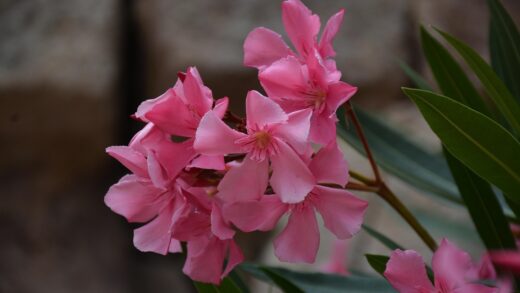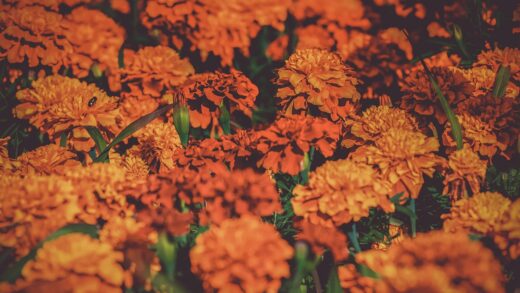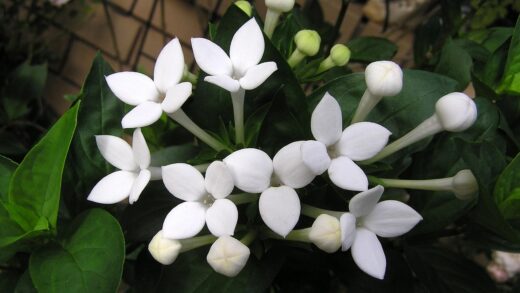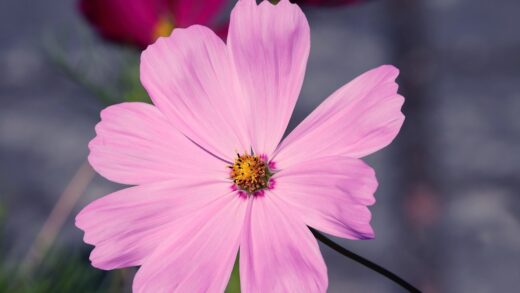The trifoliate orange is a plant that thrives in the generosity of the sun, and its light requirements are a non-negotiable aspect of its cultivation. To achieve its full potential in terms of growth, density, flowering, and fruiting, it must be sited in a location that receives full, direct sunlight. This translates to a minimum of six, and preferably eight or more, hours of unimpeded sunlight each day during the growing season. This abundance of light fuels the process of photosynthesis, providing the energy the plant needs to develop its strong, thorny structure, produce its distinctive three-lobed leaves, and, most importantly, form the flower buds that will become the fragrant spring blossoms and iconic autumn fruit.
A location with a southern or western exposure is typically ideal, as these orientations capture the most intense and prolonged periods of daylight. When deprived of adequate sunlight, the trifoliate orange undergoes a noticeable change in its character and form. Its growth becomes sparse and leggy, with elongated gaps between the leaf nodes as the branches stretch out in a desperate search for light. The dense, impenetrable quality that makes it an excellent hedge or barrier plant is lost, replaced by a thin and open habit. This etiolated growth is a clear sign that the plant’s most fundamental need is not being met.
The impact of insufficient light extends directly to the plant’s ornamental features. Flowering will be significantly reduced or may fail to occur altogether in a shady location. Since the fruits develop from these flowers, a lack of blossoms naturally means a lack of the small, yellow, aromatic oranges that add so much character to the plant in the autumn and winter. The foliage may also appear a lighter shade of green, and the overall vigor and resilience of the plant can be compromised, potentially making it more susceptible to stress and opportunistic pests.
Therefore, the decision of where to plant a trifoliate orange must be driven primarily by the availability of sunlight. While the plant is adaptable in terms of soil and tolerant of cold, its need for light is absolute. Before planting, it is crucial to observe the proposed site throughout the day to accurately gauge how many hours of direct sun it receives, taking into account the shadows cast by buildings, trees, and other structures. Choosing the sunniest possible location is the first and most important step toward growing a healthy, beautiful, and productive trifoliate orange.
The importance of full sun exposure
Full sun exposure is the cornerstone of vigorous growth and health for the trifoliate orange. The plant’s entire energy production system is optimized for high-light conditions. Photosynthesis, the process by which plants convert light energy into chemical energy in the form of sugars, operates at its peak efficiency in direct sunlight. These sugars are the fuel for all of the plant’s metabolic activities, from the growth of new leaves and branches to the production of flowers and the development of defense compounds that help it resist pests and diseases. A plant in full sun is a plant with a full tank of energy.
More articles on this topic
The density of the plant’s foliage is directly correlated with the amount of light it receives. In a sunny location, the trifoliate orange will produce a greater number of leaves that are closer together, creating a thick, lush canopy. This dense habit is not only aesthetically pleasing but also contributes to the plant’s effectiveness as a screen or barrier. The strong light also promotes the development of robust, sturdy branches capable of supporting the foliage and fruit, as well as withstanding the pressures of wind and snow.
Flowering is perhaps the process most visibly dependent on high light levels. The formation of flower buds is an energy-intensive process that is triggered by a combination of factors, including day length and, crucially, the accumulation of energy reserves from photosynthesis. A trifoliate orange growing in the shade may simply not have enough stored energy to initiate and develop a significant number of flower buds. As the plant flowers on wood from the previous season, a sunny summer is essential for ensuring a spectacular floral display the following spring.
The quality and quantity of fruit are also enhanced by full sun exposure. Sunlight is necessary for the proper development and ripening of the small, downy oranges. More abundant flowering naturally leads to the potential for a larger fruit set. Furthermore, the sun’s energy contributes to the production of the aromatic oils in the peel that give the fruit its intense, characteristic fragrance. A sun-drenched plant will produce a much more impressive and ornamental crop of fruit than one languishing in the shade.
Effects of insufficient light
When a trifoliate orange is planted in a location that provides insufficient light, the consequences become apparent in its growth pattern and overall health. The most immediate and noticeable effect is etiolation, a process where the plant’s stems become elongated and weak. The internodes, which are the sections of stem between the leaves, will be noticeably longer than on a plant grown in full sun. This is a survival strategy; the plant is redirecting its limited energy into growing taller as quickly as possible in an attempt to reach a source of brighter light.
More articles on this topic
This leggy growth results in a sparse, open, and often misshapen plant that lacks the dense, shrubby character it is known for. The foliage will be less abundant, and the leaves themselves may be larger but thinner than normal. This altered form not only detracts from the plant’s ornamental value but also compromises its structural integrity, making the weak, elongated branches more susceptible to breakage. The natural, impenetrable barrier quality of the plant is completely lost in shady conditions.
Perhaps the most disappointing consequence of inadequate light for many gardeners is the impact on flowering and fruiting. A trifoliate orange in a shady spot will produce very few flowers, if any at all. The plant must prioritize its limited energy resources for basic survival and vegetative growth, leaving little to spare for the demanding process of reproduction. This lack of flowers directly translates to a lack of the unique, fuzzy yellow fruits, robbing the plant of one of its key seasonal highlights.
Beyond the visible effects on growth and flowering, a lack of sunlight can also weaken the plant’s overall resilience. A plant that is not photosynthesizing efficiently will have fewer energy reserves to defend itself against pests and diseases or to recover from environmental stresses like drought or winter cold. While the trifoliate orange is naturally tough, chronic low-light conditions place it in a state of continuous stress, making it more vulnerable to problems that a healthy, sun-grown specimen would easily shrug off.
Site selection for optimal light
The process of selecting a planting site for a trifoliate orange must begin with a careful analysis of the light patterns in the garden. This involves more than a casual glance; it requires observing the proposed location at different times of the day and considering how the light changes with the seasons. The sun’s path across the sky is lower in the winter and higher in the summer, which can dramatically alter the duration and intensity of sunlight reaching a particular spot. The ideal location will be free from the shadows of buildings, large trees, or other structures for at least six to eight hours daily.
An open area with a southern or western exposure is generally the best choice in the Northern Hemisphere. A south-facing location will receive strong sunlight for the longest portion of the day. A west-facing site will receive intense afternoon sun, which is also excellent for promoting vigorous growth. An east-facing location, which receives morning sun, can be adequate, but it is essential to ensure that it still receives light for a sufficient number of hours throughout the day and is not shaded by the afternoon.
When planning the garden layout, it is important to consider the future growth of surrounding plants. A small tree planted nearby may not cast much of a shadow now, but in ten years it could grow to completely shade the trifoliate orange. One must anticipate the mature size of all plants in the vicinity to ensure that the chosen sunny spot will remain a sunny spot for the long term. This forward-thinking approach to placement is crucial for the sustained health of a long-lived shrub like the trifoliate orange.
If a garden has limited areas of full sun, the trifoliate orange should be given priority for one of these prime locations. Its need for light is more critical than that of many other shrubs that can tolerate partial shade. Sacrificing a small amount of lawn or re-siting other, more shade-tolerant plants is a worthwhile trade-off to provide this sun-loving species with the conditions it requires to thrive. Making the right choice at the planting stage will prevent the disappointment of a weak, non-flowering plant and the difficulty of having to transplant a thorny, well-established shrub later on.
Light needs for container-grown plants
The light requirements for a trifoliate orange grown in a container are identical to those for a plant grown in the ground: it needs full sun. When choosing a location for the pot on a patio, deck, or balcony, the sunniest possible spot should be selected. The mobility of containers offers an advantage, as the pot can be moved throughout the year to follow the sun’s seasonal path, ensuring it always receives maximum light exposure. For example, a spot that is sunny in the summer might become shaded by the house in the winter as the sun’s angle changes, necessitating a move to a new location.
Container-grown plants can be more susceptible to overheating, especially in dark-colored pots placed in intense afternoon sun. The soil in the container can heat up to temperatures that can damage the plant’s sensitive feeder roots. While full sun is essential for the foliage, providing some shade specifically for the pot itself can be beneficial. This can be achieved by placing the container inside a larger, decorative pot (the pot-in-pot method) or by grouping other, smaller plants around its base to shade the sides of the container.
Watering becomes even more critical for potted plants in full sun. The combination of direct sunlight and wind can cause the soil in a container to dry out very quickly. During the heat of the summer, a potted trifoliate orange may need to be watered daily. It is essential to check the soil moisture regularly and water thoroughly whenever the top few inches feel dry. A plant that is both sun-stressed and water-stressed will not perform well, so balancing its need for light with its need for consistent moisture is key to success in containers.
For overwintering purposes, the light needs of a containerized trifoliate orange change completely. When the plant is brought into a protected, unheated location like a garage or shed to protect its roots from freezing, it should be in a dormant state. During dormancy, the plant has no leaves and is not photosynthesizing, so it does not require any light. A dark, cold location is perfectly suitable and even preferable, as warmth and light could encourage it to break dormancy too early. The need for full sun returns only when the plant is brought back outdoors in the spring.


















